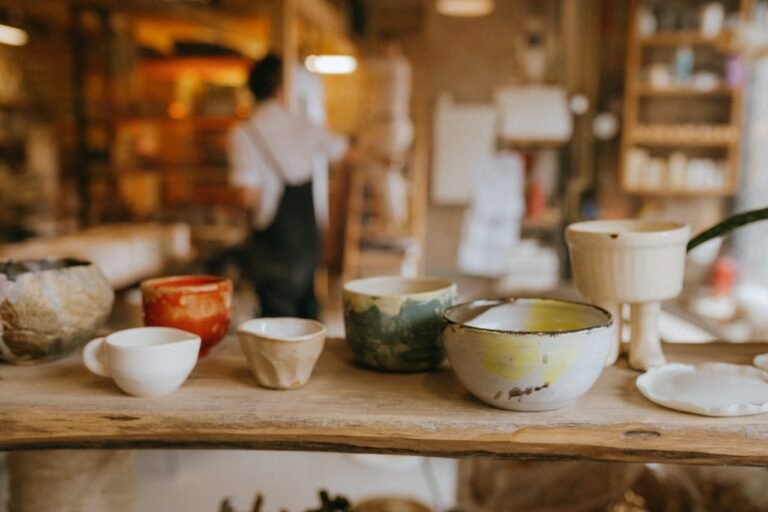Is Play-doh Non-toxic?
Play-doh is every child’s best friend and companion. And with the help of their muscles and delicate fingers, unique ideas from their imaginations can become realities. However, it is critical to learn about the precautionary measures of play-doh and if Is Play-doh Non-toxic and safe for your child to play with it.
Play-doh certified as non-toxic. It is a modeling compound made for children to create arts and crafts at home or school. Play-doh is not food and is not manufactured in a food facility; thus, it is not for consumption.
Aside from the fact that play-doh is non-toxic, it can also support the child’s development and learning. When I was in kindergarten, the teacher would make us play with playdough before the lesson and discussion started. Whether in school or at home, it allows children to have fun while developing their cognitive, social, and creative skills.
According to my teacher, playdough helps children in terms of their physical, mental, and social aspects. It helps their reflexes and minds be more focused, creative, and innovative. And I can say that it is effective, for it helped me enough to express my ideas while learning and having fun.
On the other hand, it also creates a healthy environment. I still remember how my friends and I used to help each other out by making different shapes using playdough—resulting in a fun experience and an exciting way to start the class with a sharp and active mind. Indeed, play-doh is not just safe and non-toxic, but it is also fun and exciting to play together.
Is Playdough Safe for Kids?
Playdough is technically safe for children as long as we take safety precautions to avoid complications. It is vital to know that playdough contains age recommendations and is not edible. And in order to ensure that our children are not only having fun but are also safe when they play with playdough, we must take the following actions:
1. Check the product label.
Constantly reviewing the label before buying a product is a must, especially if it concerns your family and children’s health and safety. It includes looking for the ingredients that might affect your kids since some of the products might trigger their allergies if they have.
Moreover, you should also make sure that the product you were buying has passed the Labeling of Hazardous Art Materials Act (LHAMA), which states that every manufacturer, distributor, retailer, and some purchasers of art materials in the United States must comply with its requirements, particularly, in terms of chronic health effects. It helps bring safer products to various customers, including you and your children.
2. Provide parental supervision.
Even if your children have met the age requirement in using a play-doh, constant supervision of a parent or guardian is still needed. We should remember that there are problems such as food allergies and choking hazards our children might encounter.
Choking is one of the risks our children might put themselves at. And just in case a choking incident happens, it is preferred that a parent or guardian knows how to perform an abdominal thrust, also known as the Heimlich maneuver.
3. Consult your children’s pediatrician.
We cannot measure the problems that might happen in our hands. And in case you encounter one of them, it is suggested to contact your kids’ pediatrician immediately to avoid any more complications.
>> Related: Is Play-Doh Safe to Eat?
What Happens If My Kid Eats Play-doh?
Just because play-doh is not edible does not mean children will not try to eat it. In most cases, ingesting a small amount of it does not result in any symptoms, but if they swallow a large amount of it, they may experience some. If this occurs, provide the following three steps to avoid further issues.
1. Give your kid a few sips of water.
If your child happens to eat a play-doh, it is necessary to give them a few sips of water to prevent dehydration or mild dehydration. In treating food poisoning or any related stuff like eating a play-doh, drinking water is essential in replacing lost fluids and electrolytes.
2. Watch for symptoms.
Symptoms may appear after suffering from food poisoning or eating a large amount of play-doh. It is possible to experience vomiting or constipation. Parents or guardians should watch if their kids have any signs or symptoms.
3. Contact your pediatrician immediately.
If your child is experiencing vomiting, constipation, or diarrhea persistently, contact your pediatrician right away. It is necessary to consult with an expert rather than do nothing.
Is Play-doh Non-toxic and What is it made of?
Although the ingredients of play-doh are proprietary, they are made primarily from a mixture of flour, water, and a high amount of salt. It does not contain any boron compounds such as borax, boric acid, boronic acid, boron nitride, zinc borate, diborane, boride, sodium borohydride, boron phosphate, boron suboxide, calcium metaborate, magnesium borate, boron monoxide, and more. Boron compounds are hazards to one’s health—whether for adults or children—and exposure to a large amount of them can affect the stomach, intestines, liver, kidney, and brain, which may cause death.
Play-doh also does not contain peanuts, nuts, peanut oil, or any milk byproducts—such as butter, cheese, cream, yogurt, skim milk, buttermilk, condensed milk, ghee, dried milk, and others. Moreover, it contains wheat which may cause an allergic reaction to people who has allergies to wheat gluten. And because of its high salt content, play-doh can also be harmful to pets if eaten.
Therefore, to ensure the safety of your children or pets, it is essential to first review the product labels, ingredients, and safety measures before allowing them to play with something, regardless of whether it’s play-doh or not. Risks and harms are everywhere, and if we are not aware of them, we can be the next victim. That is why safety must come first because, in that way, you, your children, and even your pets will have fun playing, safe and sound.







